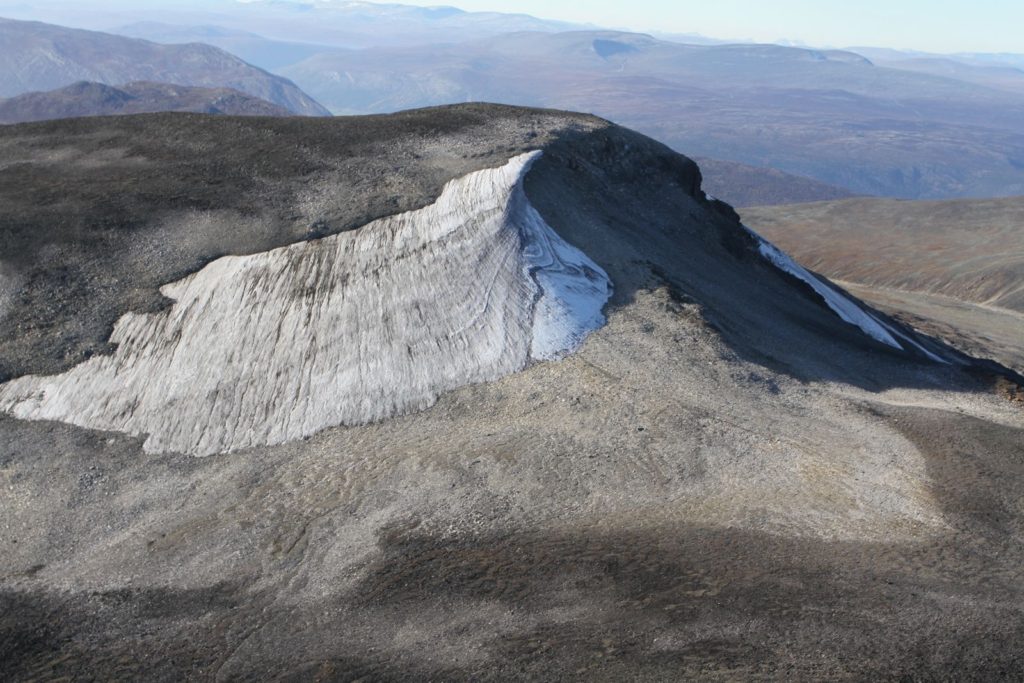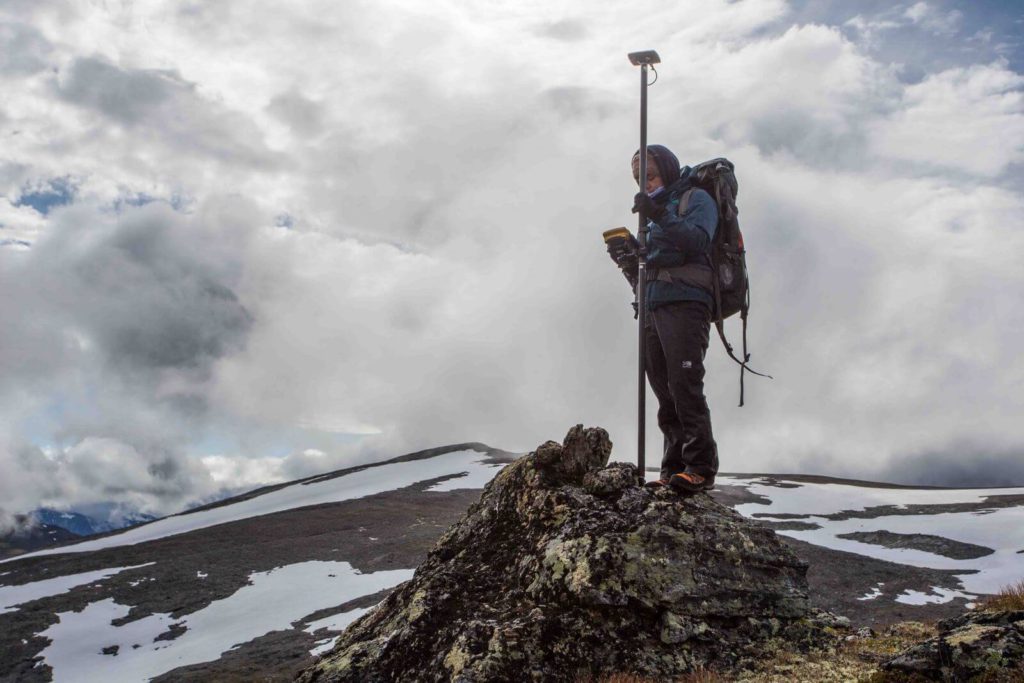Climate change is a vast and complex subject, which is impossible to explain in detail on our website. You may, however, read about the evidence of climate change here: http://climate.nasa.gov/evidence/
One of the reasons for the great interest in archaeological finds from the ice is the link to climate change. One headline even read “Archaeologists Become Unlikely Beneficiaries of Global Warming”.
The Earth is warming, the ice is melting, and archaeological discoveries, preserved by the ice, are being made. In recent years the melting of mountain and alpine ice and glaciers has accelerated and the number of archaeological finds recovered from the melting ice is rising. The artefacts are getting older due to melting of older ice. However, the story of the interplay between glacial ice and archaeological finds is complicated.
One important point to note is that the present glaciers and ice patches are not remnants of the ice sheet that covered Scandinavia during the last Ice Age. If we go back 6000-8000 years, most of the glaciers in the northern hemisphere were gone. During the so-called Holocene Thermal Optimum, gradual changes in the Earth’s orbit led to warmer summers than today. Slowly this orbital change should cause lower global mean summer temperatures in the Northern Hemisphere and send the Earth on its way into a new ice age, if it were not for human greenhouse gas emissions.
The glacial ice in the high mountains has accumulated since the end of the Holocene Thermal Optimum. This has not been a linear process, however, as many natural factors other than planetary orbit influence the climate. The ice has been expanding and contracting over time. Now, with anthropogenic global warming at play, the ice is retreating.

The prediction is that global and regional warming will lead to gradual melting of all the ice in the high mountains in Scandinavia. The process is already well on its way. Light grey areas surrounding the high mountain ice clearly show where recent melting has happened. The melting and disappearance of glaciers and ice patches may lead to all kinds of serious problems for humans and animals depending on these resources. For archaeologists it will lead to the appearance of steadily older finds as the ancient ice continues to melt.

The prediction is that global and regional warming will lead to gradual melting of all the ice in the high mountains in Scandinavia. The process is already well on its way. Light grey areas surrounding the high mountain ice clearly show where recent melting has happened. The melting and disappearance of glaciers and ice patches may lead to all kinds of serious problems for humans and animals depending on these resources. For archaeologists it will lead to the appearance of steadily older finds as the ancient ice continues to melt.
